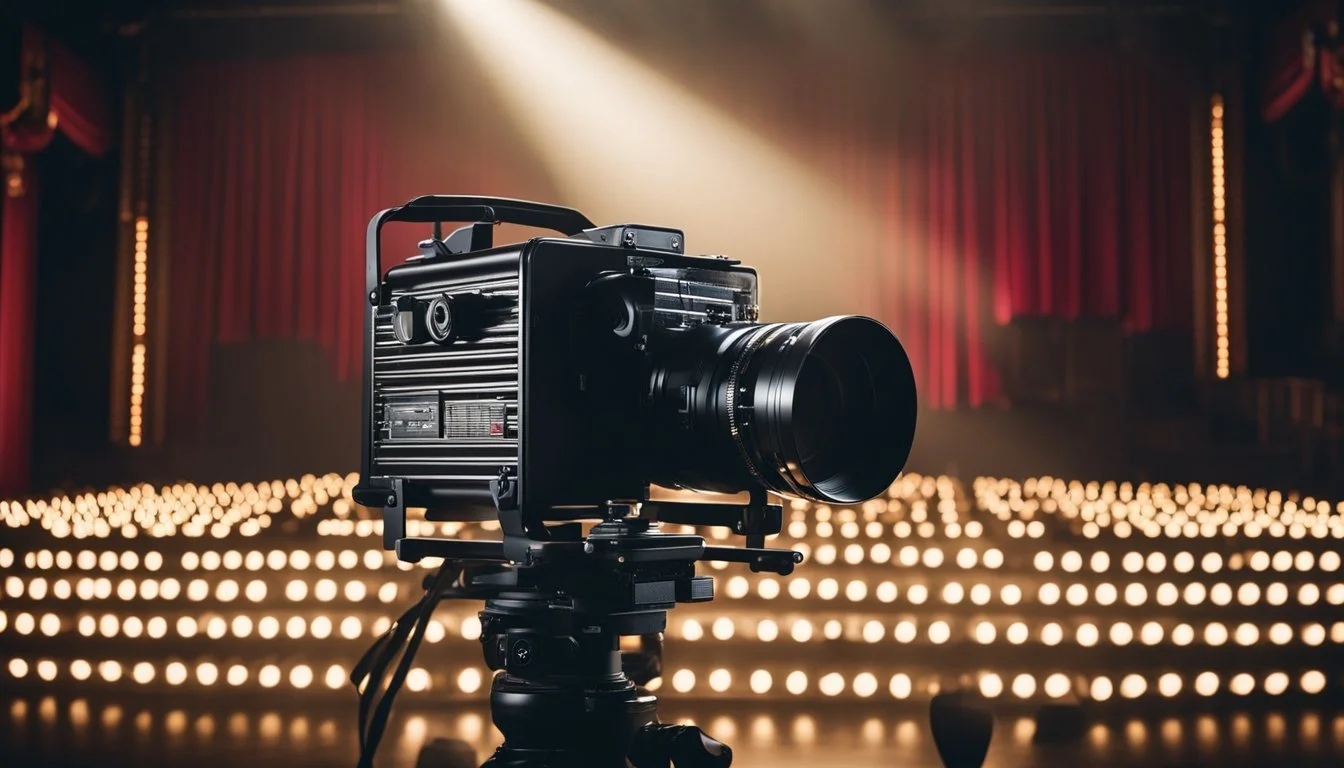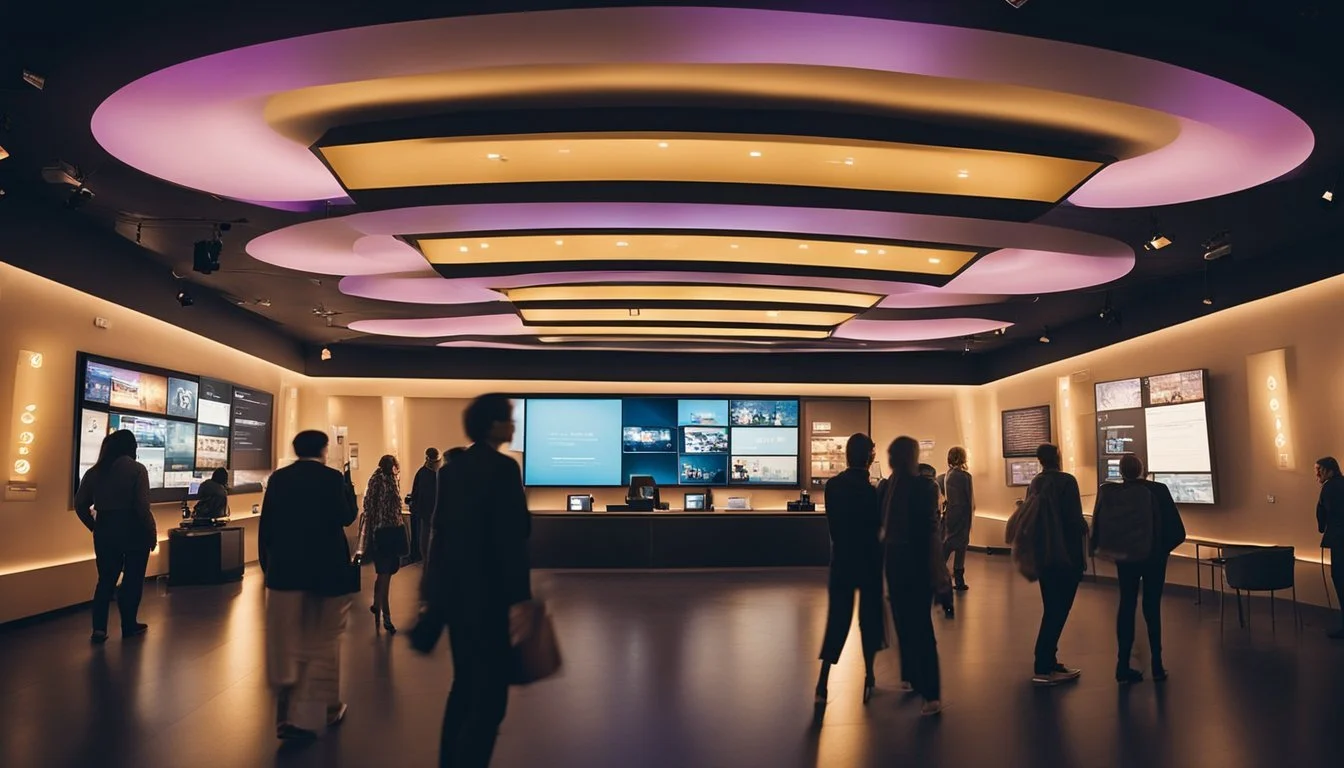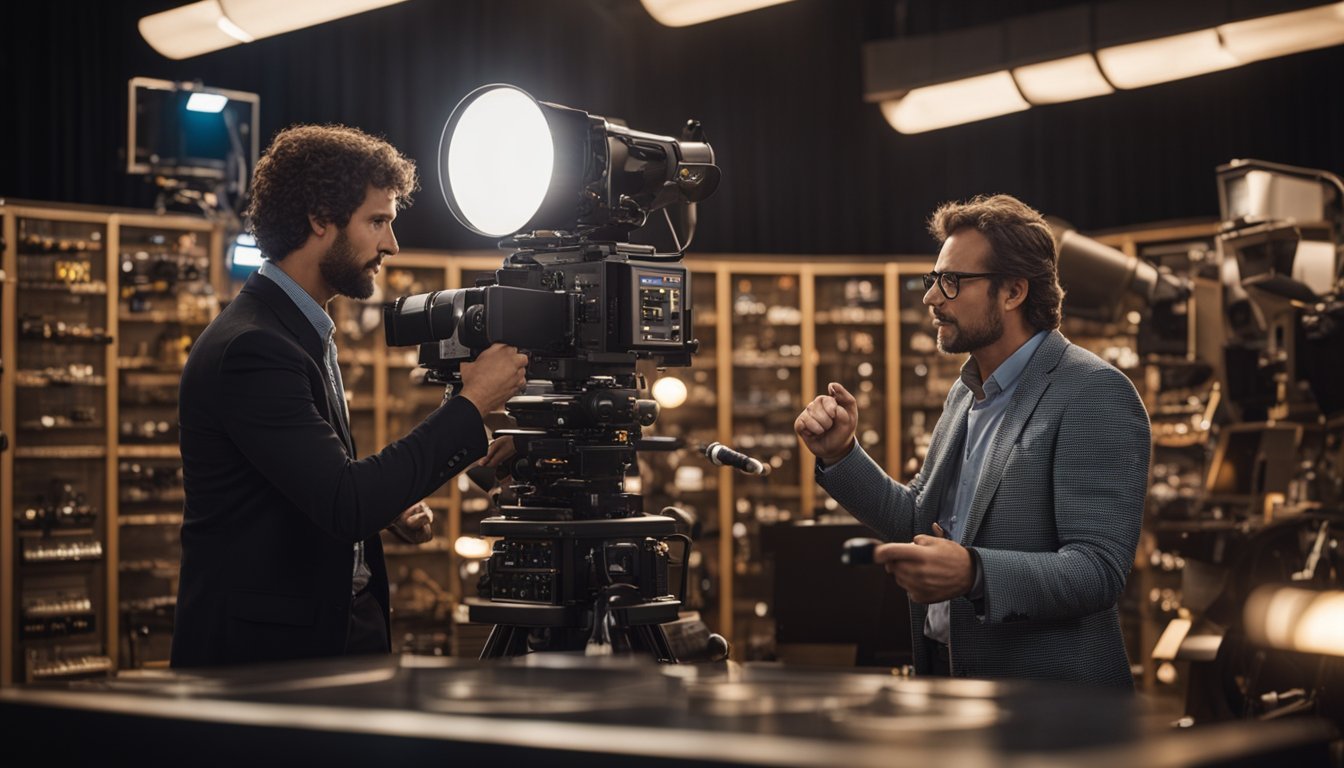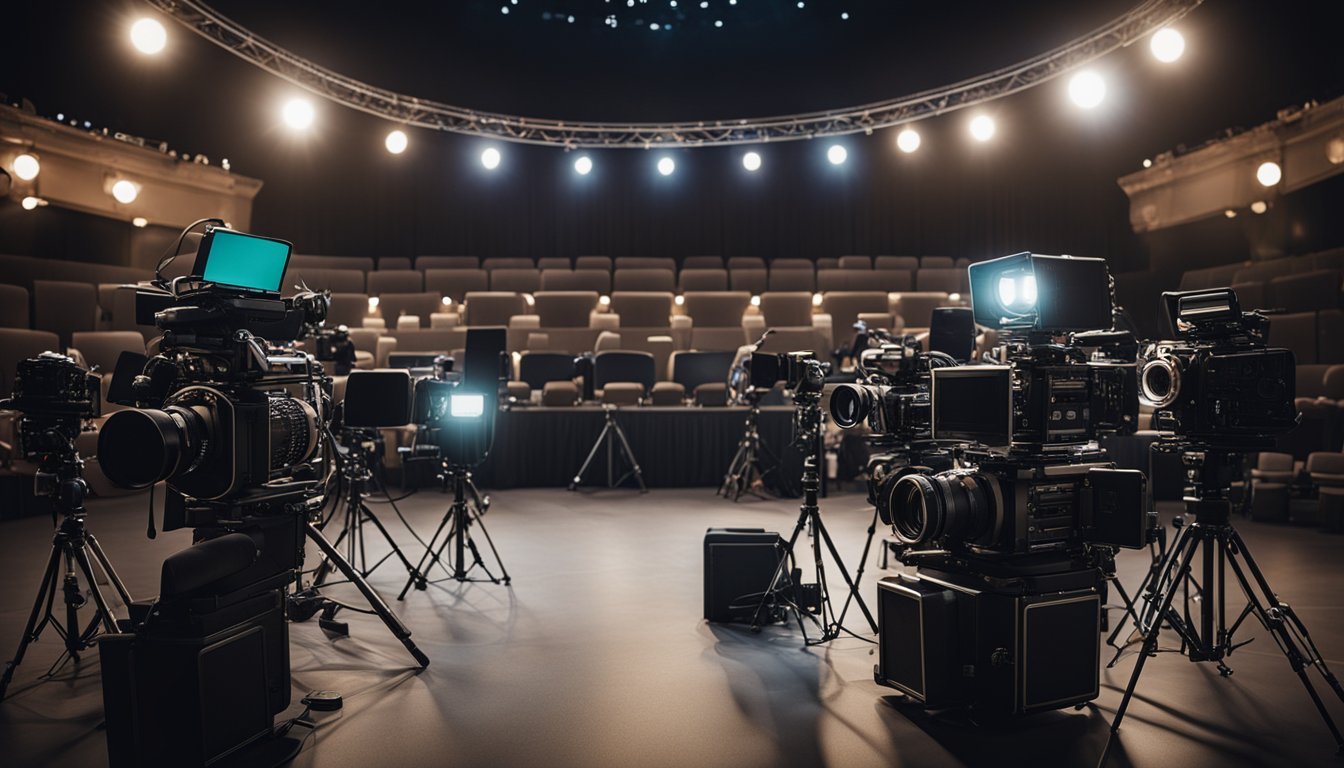Exploring the Intersection of Filmmaking and Live Theater Performances
Bridging Two Artistic Worlds
The intersection of filmmaking and live theater performances offers a unique blend of storytelling that captivates audiences in distinct ways. Filmmaking provides the ability to transport viewers to extraordinary worlds with vivid imagery and intricate narratives, creating a sense of immersion through meticulous editing and special effects. In contrast, live theater envelops audiences in the immediacy of performances, bringing the raw emotions and spontaneous interactions that can only be experienced in real-time.
This convergence has given rise to innovative forms of arts where boundaries blur, and the essence of each medium enhances the other. For instance, the broadcast of live theater performances allows viewers to enjoy the authenticity of the stage within the comfort of their homes, bridging the gap between cinematic spectacle and theatrical intimacy. These hybrid experiences highlight the dynamic relationship between recorded and live performances, offering new avenues for creative expression.
Understanding this blend is crucial for appreciating how these two forms of art can enrich each other. Whether through the electrifying atmosphere of a live performance or the crafted perfection of film, the intersection of these mediums opens doors to artistic possibilities that are as intriguing as they are diverse.
Historical Evolution of Live Theater and Film
Live theater and film have both evolved significantly, intertwining and influencing each other in numerous ways.
In the early days of theater, performances were often held in open-air amphitheaters, such as those in ancient Greece and Rome. These venues provided a space for large audiences to experience live dramatic works.
The Renaissance period saw the construction of elaborate indoor theaters. Innovations like the proscenium arch transformed the stage, allowing for more complex set designs and immersive performances.
Cinema began in the late 19th century with the invention of motion pictures. Early films were often shown in existing theaters, combining elements of live performance and projected images.
In the 1920s, dedicated movie theaters emerged as a distinct architectural form. These theaters influenced how audiences engaged with films, offering a unique communal viewing experience.
As film technology advanced, so did the complexity of movies. The introduction of sound in movies in the late 1920s changed the dynamic, bringing a new layer of realism that rivaled live theater performances.
The mid-20th century saw the rise of multiplexes, allowing for a greater variety of films to be shown simultaneously. This development paralleled changes in live theater, where smaller black box theaters provided more intimate performance spaces.
In recent years, technology has further blurred the lines between theater and film. Productions now often integrate live-streaming, multimedia elements, and digital effects, providing audiences with hybrid experiences that leverage the strengths of both mediums.
Artistic Merger: Film and Theater Influences
The intersection of filmmaking and live theater results in rich narrative techniques, visually compelling aesthetics, and deeply developed characters. This blend allows both mediums to enhance their unique strengths.
Narrative Techniques
Filmmaking and theater use distinct narrative techniques to tell stories. Theater traditionally relies on dialogue and monologues to convey emotions and plot, while films can incorporate various visual storytelling tools.
Flashbacks, voiceovers, and cuts are cinematic methods that enhance storytelling. Theater uses live performances to create a sense of immediacy and intimacy. These techniques collectively draw audiences deeper into the narrative, enriching the overall experience.
Visual Aesthetics
The visual aesthetics in film and theater significantly differ but also complement each other.
Movies utilize sophisticated camera angles, lighting, and special effects to create immersive worlds. Theater, in contrast, relies on set design, lighting, and costumes to establish its atmosphere. When filmmakers incorporate theatrical elements like minimalistic sets and dramatic lighting, they can achieve a more focused and stylistically unique aesthetic.
Character Development
Character development in theater often emphasizes in-depth performances and interaction with the live audience.
Actors on stage have the opportunity to evolve their characters over multiple performances, adapting to audience reactions. Film actors, however, benefit from the ability to film multiple takes, allowing for nuanced portrayals. By merging these approaches, filmmakers and theater directors can achieve fully fleshed-out characters that resonate deeply with audiences.
Technological Advancements Bridging the Gap
Innovations in technology have significantly transformed both filmmaking and live theater, enhancing the viewer experience and bridging the gap between these two creative disciplines. Key areas of development include projection and set design, live broadcasting, and the use of augmented and virtual reality.
Projection and Set Design
Advancements in projection technology have revolutionized set design in both filmmaking and live theater. High-definition projectors allow for dynamic and interactive backgrounds that can change in real-time. 3D mapping techniques enable the projection of visuals onto complex surfaces, creating immersive environments for audiences.
Integration of digital screens and automated lighting systems also enhances flexibility. Set pieces can seamlessly transition between scenes, reducing downtime and improving storytelling. These technologies enable creators to design more intricate and engaging sets, effectively merging cinematic and theatrical elements.
Live Broadcasting
Live broadcasting technology has expanded the reach of live theater performances. High-definition cameras and streaming platforms allow theater productions to be broadcast around the world. This not only increases accessibility but also enables remote audiences to experience live performances in near real-time.
Live multi-camera setups capture performances from multiple angles, providing viewers with a cinematic experience. This practice enriches the visual presentation and brings a new dimension to theater. Additionally, live broadcasts often include behind-the-scenes content, offering deeper insights into the production process for the audience.
Augmented Reality and Virtual Reality
Augmented Reality (AR) and Virtual Reality (VR) are at the forefront of marrying filmmaking and live theater. AR can enhance live performances by overlaying digital information or animations onto physical sets and actors. Audiences equipped with AR devices can experience additional layers of content that complement the storyline.
VR offers immersive environments where viewers can navigate and interact within a 360-degree space. This allows for both experimentation in storytelling formats and new ways to engage audiences. In filmmaking, VR can create entirely new worlds, while in live theater, it can provide unique, other-worldly experiences that are vivid and interactive.
Cinematic Theater: Case Studies
Cinematic theater blends the immediacy of live theater with the expansive visual storytelling of film. The following examples highlight various approaches to merging these forms, showcasing innovations in performance and production.
National Theatre Live
National Theatre Live broadcasts theater performances to cinemas worldwide. Launched in 2009 by the National Theatre in London, this initiative aims to make high-quality theater accessible to a broader audience.
The key element is the use of multiple cameras to capture the performance from different angles, akin to a live television broadcast. This ensures that the audience in the cinema can experience intimate close-ups and sweeping stage views, enhancing the emotive and visual impact.
Major productions such as "Frankenstein" and "Hamlet" have garnered critical acclaim, demonstrating the technical and artistic potential of this format.
Immersive Theater Productions
Immersive theater productions offer a unique blend of live performance and cinematic experience. These productions involve the audience in the action, creating a sense of participation and immediacy.
One prominent example is Punchdrunk's "Sleep No More", where the audience moves through a multi-room set, interacting with the environment and sometimes the actors. This navigational freedom transforms the audience's role from passive to active participants.
The careful use of lighting, set design, and even cinematic effects (like projections) enhances the immersive quality, making the experience a blend of live theater and film.
Film Adaptations of Stage Plays
Film adaptations of stage plays are another form of cinematic theater, offering a way to experience theatrical stories in a different medium. These adaptations often modify the original play to suit the cinematic format while retaining the core narrative and performances.
A notable example is Mike Nichols' adaptation of "Who's Afraid of Virginia Woolf?", which successfully translates the intense, claustrophobic atmosphere of the stage play to the screen. The shift from a static stage to dynamic camera movements and editing allows for a more nuanced exploration of characters and themes.
This process often involves collaboration between the original playwright, the director, and film technicians to preserve the essence of the stage performance while utilizing the strengths of film.
Audience Engagement and Experience
The interplay between audience engagement and the experience of live theater and filmmaking offers unique insights into how people connect emotionally and intellectually with performances.
Interactivity and Participation
Interactivity in live theater challenges traditional passive audience roles. Audiences may be encouraged to participate directly, impacting storylines or character actions. Interactive experiences often provide deeper emotional connections and increased investment in the narrative.
For instance, immersive theater productions blur boundaries, turning viewers into participants. Case studies show these methods heighten audience absorption and enjoyment. Similarly, interactive film projects, while less common, harness technology to invite active viewer input.
Transforming Spectatorship
Transforming spectatorship by shifting audiences from passive observers to engaged participants requires innovative approaches. Live streaming enables wider access, allowing audiences to experience performances in remote settings.
Feedback loops, where audiences can react in real-time, enhance the communal aspect of viewership. Technology like VR and AR is merging cinematic and theatrical elements, breaking conventional spectator boundaries. These methods foster a sense of immediacy and presence, redefining the spectator experience.
The ongoing evolution in audience engagement practices underscores the dynamic nature of contemporary performances, enriching the spectator's journey through layered and interactive encounters.
Challenges and Criticisms
Filmmaking and live theater performances intersect in dynamic ways, yet this fusion isn't without its set of challenges and criticisms. These revolve around maintaining authenticity and performance integrity, economic factors, and ensuring accessibility and inclusivity.
Authenticity and Performance Integrity
Maintaining the authenticity and integrity of performances is a significant challenge. In live theater, the immediacy of the performance can be lost when translated to film. This shift can dilute the raw emotional impact and spontaneity that live audiences experience.
Actors may find it difficult to balance between the exaggerated expressions needed for theater and the subtle nuances required for film. Directors and producers must find a way to honor the original performance's spirit while adapting it for the screen. This involves careful planning and strategic decision-making to ensure that the transferred performance does not lose its essence.
Economic Considerations
Economically, merging filmmaking with live theater can be costly. Filmmaking necessitates substantial investment in technology, crew, and post-production, which is often beyond the budget of many theater productions. This financial burden can limit opportunities for small or independent theater companies to participate in such projects.
Moreover, the revenue models of theater and film differ significantly. Theater relies heavily on live ticket sales, while film profits might come from box office sales, streaming rights, and other media. Balancing these differing economic models can be complex and may require innovative approaches to profit-sharing and funding.
Accessibility and Inclusivity
Ensuring accessibility to a diverse audience is another considerable challenge. Traditional theater venues may not be easily accessible to individuals with mobility issues or those living in remote areas. When theater performances are filmed, they can reach a global audience, but this approach might exclude those without access to digital media.
Inclusivity in casting and storytelling is also crucial. There's a growing demand for representation of marginalized communities in both theater and film. However, financial and structural barriers often limit these opportunities. Audience members and critics alike scrutinize how well productions address these issues, making it an area that requires ongoing attention and action.
Future Directions for Hybrid Performances
Hybrid performances are taking innovative storytelling formats, leveraging cross-disciplinary collaborations, and utilizing digital media to create new and engaging experiences. These advancements are shaping the future of live theater and filmmaking intersections.
Innovative Storytelling Formats
Hybrid performances are redefining traditional narratives by integrating virtual reality (VR) and augmented reality (AR). In combining physical and digital worlds, artists create immersive experiences that engage audiences on multiple sensory levels. For instance, re Opera merges classical storytelling with 3D animation and motion capture, allowing for dynamic and interactive narratives.
Innovative formats also enable audiences to participate in live performances from remote locations, broadening accessibility and inclusivity. These advancements empower storytellers to experiment with nonlinear and interactive plots, providing a fresh canvas for creative expression.
Cross-Disciplinary Collaborations
Hybrid performances often result from collaboration between disciplines, blending theater, film, digital art, and technology. Such partnerships foster innovative approaches to performance art, enhancing both technical and artistic aspects. Artists, technologists, and storytellers work together to create experiences that are not possible within the confines of a single discipline.
For example, projects that integrate live acting with digital backdrops and pre-recorded footage can create seamless transitions between scenes and settings. These collaborations harness expertise from various fields to produce performances that are visually and technically sophisticated, paving the way for pioneering hybrid experiences.
The Role of Digital Media
Digital media plays a critical role in the evolution of hybrid performances. The use of livestreaming, video-on-demand (VOD), and interactive platforms enables performances to reach a global audience. Technologies such as Orpheus VR and Reallusion enhance audience engagement by offering unique viewpoints and interaction opportunities.
Additionally, social media and digital marketing are crucial for promoting hybrid performances, fostering community and audience interaction. This digital integration not only extends the reach of live theater but also allows for real-time feedback and engagement, enhancing the overall experience for performers and viewers alike.
Conclusion
The intersection of filmmaking and live theater performances is a fascinating convergence of two powerful storytelling mediums.
Film excels in taking audiences to vivid, imaginative worlds through advanced technologies like CGI. This capability allows filmmakers to create intricate narratives that might be challenging to replicate on stage.
Theater, by contrast, offers a unique, live experience. Each performance is a one-time event, with no two performances being exactly the same. This ephemeral nature creates a special bond between the performers and the audience.
Key Points of Intersection:
Realism and Imagination: Film can blur reality with special effects, while theater relies on the immediacy and presence of the performers.
Audience Experience: Theater engages the audience directly, creating a communal experience. Film allows for personal, intimate viewing.
Storytelling Techniques: Filmmaking uses editing, camera angles, and visual effects. Theater emphasizes dialogue, set design, and live interaction.
The constant evolution in both fields ensures that each continues to push boundaries and inspire.
By understanding these unique strengths, one can appreciate how the intersection of film and theater enriches the broader landscape of entertainment. Known for their distinct approaches, both forms of art contribute to a diverse and immersive storytelling experience.







